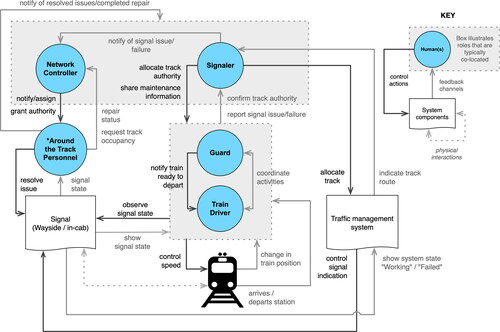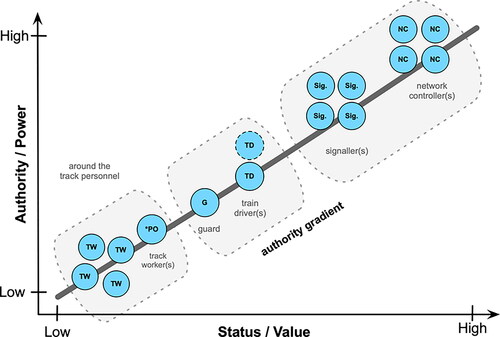Figures & data
Figure 1. Overview of the primary roles and interactions of frontline workers in passenger rail operations in many Australian settings (adapted from Roth, Naweed, and Multer Citation2020). *Around the track personnel captures anyone working in and around the track; repair work can also be facilitated by logging jobs to a facilitatory service desk in some contexts.

Table 1. Application of methods and frameworks involving communication-based errors in the rail environment.
Table 2. Application of Hofstede’s power-distance theory based on industry and context.
Figure 2. Conceptualisation of the authority gradient showing relationship between authority/power and status/value of the core operational multidisciplinary team functions. Note: terminology related to Australian settings; box around specific domains is used to indicate that these are typically co-located; *PO = protection officer role in track worker party.

Table 3. Example pf application of CRM principles in industries other than rail.
Table 4. Summary of research gaps related to investigation of the power-distance issues in rail.
